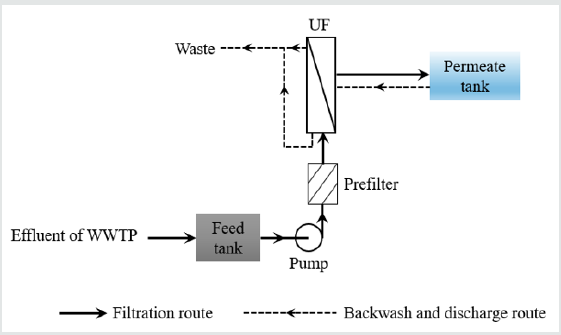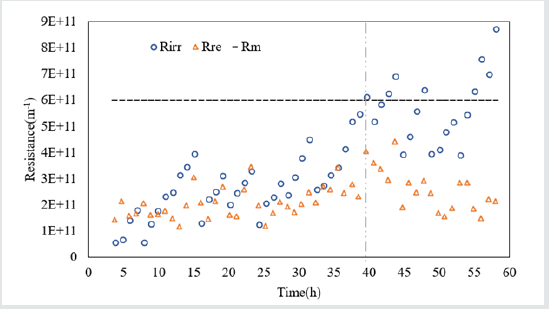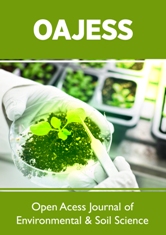
Lupine Publishers Group
Lupine Publishers
Menu
ISSN: 2641-6794
Review Article2641-6794 
Water Reuse from Municipal Secondary Effluent by Ultrafiltration Becomes a Reality More than Ever Volume 5 - Issue 3
Yang J1, Monnot M1, Eljaddi T1, Ercolei L2, Moulin P1*
- 1Aix Marseille Univ, Laboratoire de Mécanique, Modélisation et Procédés Propres, Equipe Procédés Membranaires (EPM-M2P2-CNRS-UMR 7340), Europôle de l’Arbois, BP 80, Bat. Laennec, Hall C, 13545 Aix-en-Provence cedex 04, France
- 2Société des Eaux de Marseille Métropole, 25 Rue Edouard Delanglade -B.P. 29 - 13006 Marseille Cedex 06, Marseille, France
Received: June 26, 2020; Published: July 02, 2020
Corresponding author: Moulin P, Aix Marseille, Laboratoire de Mécanique, Modélisation et Procédés Propres, Equipe Procédés Membranaires (EPM-M2P2-CNRS-UMR 7340), Europôle de l’Arbois, BP 80, Bat. Laennec, Hall C, 13545 Aix-en-Provence cedex 04, France
DOI: 10.32474/OAJESS.2020.05.000214
Introduction
Water scarcity has become a critical problem in many semiarid
and arid regions. More notably, water scarcity became worse all over
the world because of the influences of social development including
climate change, population increase, rapid urbanization, industrialization,
and tourism with a huge amount of wastewater discharge
[1,2]. To alleviate water shortage, wastewater reuse has long been
considered as a promising approach with a sustainable, reliable
and energy recovery concept [3]. Nowadays, wastewater reuse is an
essential part of sustainable urban development, permitting a more
balanced management of water resources while contributing to the
maintenance of quality standards [4]. To implement water reuse
projects, the water product quality is the key factor which should
be strictly sufficient to local water reuse guidelines. Most municipal
wastewater is usually treated to secondary effluent, but the effluent
quality is controversial because of risks for human health and
public environments [5]. Therefore, the secondary effluent needs
to be treated by tertiary treatment to be safely reused [6,7]. Overall,
water reuse is mostly applied in non-potable uses, occupying
97.7% of the water reuse market, including non-potable urban reuse,
irrigation, recreation impoundment, environmental enhancements,
industries, and groundwater recharge [8,9]. After long-term
research, ultrafiltration (UF) membrane is widely considered as a
cost-effective process applied on water treatment for non-potable
reuse due to its easy operation, high efficiency, and economic cost.
UF can highly remove total suspended solids (TSS), turbidity, and
more importantly, UF can retain microorganisms significantly, including
bacteria, protozoa, and viruses [10]. Indeed, Falsanisi et al.
[7] and Muthukumaran et al. [11] both confirmed that UF process
dealing with secondary treated wastewater could provide qualified
permeate that satisfies to World Health Organization (WHO) water
reuse guidelines.
In Europe, the lack of homogenous regulations or the lack of
regulations for all types of applications was often an obstacle for
full development of reuse projects. Very recently, on May 2020, a
regulation of the European Parliament and of the Council on minimum
requirements for water reuse have been adopted (regulation
(EU) 2020/741) [12]. This regulation lays down minimum requirements
for water quality and monitoring in the case of water reuse
for agricultural irrigation. This regulation shall be binding in its entirety
and directly applicable in all Member States and constitutes a
first step for more global water reuse management in Europe.
In this context, this work wants to show the industrial feasibility
of using ultrafiltration as a tertiary treatment for safe water
reuse. The case-study includes a semi-industrial UF pilot plant operated
to filtrate the secondary effluent of a wastewater treatment
plant (WWTP) located close to Marseille, France, for reuse.
Material and Methods
Ultrafiltration Pilot Plant Description
The feed water used is the secondary effluent of a municipal WWTP located in Châteauneuf-les-Martigues, France. The WWTP uses a conventional activated sludge process followed by sedimentation tanks to treat raw wastewater. Table 1 shows the quality of the inlet and outlet effluent of the WWTP. This outlet effluent was the UF feed.
Table 1: Raw wastewater and UF feed quality.

CFU: colony-forming unit; PFP: Polyhedral, filamentous, and pleomorphic; n. m.: not measured.
Ultrafiltration Pilot Plant Description
The pilot plant is manufactured by Aquasource and not Aqua Source (Suez environment) with automatic operation and recording: a simplified flow diagram is shown in Figure 1. Feed water comes from the secondary effluent of a WWTP located in France continuously. The UF water production was performed at constant flux of 60 L·h-1·m-2 and filtration cycle time of 60 min, the permeate was recovered in a buffer tank for water production and backwash water. To eliminate fouling, three membrane cleanings were automatically carried out by the pilot: classical backwashes (CB), air backwashes (AB) which consists in a previous air injection in the membrane before classical backwash with permeate, and chemical enhanced backwash (CEB) which was triggered when a permeability (Lp) of 200 L·h-1·m-2·bar-1 was reached. The optimized backwash sequence in these tests are three CBs followed with one AB circularly. To be noted, all the parameters that could be affected by temperature have been normalized to a standard temperature (20 ℃) to take into account viscosity fluctuations.
To better compare the fouling removal efficiency of AB and CB, the fouling reversibility was calculated with the following equation:

where TMP represents the transmembrane pressure (Pa). Reversibility after each filtration cycle could then be calculated using the initial TMP and final TMP values TMPnend and TMPnini of the cycle n as well as the initial TMP of the next filtration cycle TMP(n +1)ini.
Results and Discussion
Water Quality
Based on the results presented in Table 2, the Indeed, UF process could remove about 99.9% turbidity, 88.7% total organic carbon, >98% chemical oxygen demand and >97% total suspend solids from the feed at the end of each filtration step under the volume concentration factor (VCF) of 270. Besides, the concentration of bacteria and virus, such as E.coli, Enterococci, Anaerobic sulphito- reducers (spores), and specific F-RNA bacteriophages (virus) were all tested under the detection limit (1 CFU/100mL for bacteria or 1 PFP/100 mL for virus), with higher than 4.0 log removal rate for all detected microorganisms (calculated from the inlet of the WWTP as stated in the regulation). Therefore, the filtration condition (J=60 L·h-1·m-2, t=60 min, 3 CBs followed with 1 AB) provides qualified water for reuse under the scope of WHO guidelines and the French regulation which concerns agricultural or garden irrigations [12]. This regulation may change in the future to comply with the European regulation quoted in the Introduction section and further water quality analysis will be performed accordingly to fully confirm the potentiality of water reuse in this study.
Table 2: Mean Permeate quality.

CFU: colony-forming unit; PFP: Polyhedral, filamentous, and pleomorphic; log*: log removal calculated from the raw wastewater quality; nm: not measured.
*There are ABCD four different levels of water quality in French water reuse standards. Level A being the best.
Permeability
Figure 2: Lp variation vs. time: (a) the whole filtration process, (b) a selected zoomed period to better see the evolution of Lp and the influence of AB.

Figure 2(a) shows the permeability variation with time, and the Figure 2(b) is an enlarged area of the red circle in Figure 2(a) to better introduce the permeability variation during each filtration cycle, and the regular occurrence of CB and AB. Results shown in Figure 2, revealed that the permeability of UF decreased quickly during each filtration step (60 min) due to fouling: accumulation of suspended particles, colloids, bacteria and viruses. However, the decreased permeability after 60 min filtration was improved to a quite high value with periodical CBs or ABs cleanings, thus resulting in slower decrease of permeability from the overall trend. There was no CEB needed during the 2 days operation (Figure 2(a)) showing the high ultrafiltration performance, because the occurrence of CEB not only consume more permeate production, but also cost more chemical agents [15]: for this process the sustainable condition is one CEB per day. In order to evaluate the efficiency of CB and AB during filtration, a selected period was zoomed to show the different effects of CB and AB on filtration. In Figure 2(b), a better fouling removal efficiency by AB is obtained than by CB because the initial permeability after each AB is obviously higher than initial permeability after pervious CB.
Fouling Resistance and Reversibility
In this paper, the foulant that can be removed by backwash contributes to the reversible fouling resistance (Rre) while the foulant that cannot be removed by backwash contributes to the irreversible fouling resistance (Rirr). Figure 3 shows the resistance variation during filtration process. From the start to the 40th hour of operation, the membrane resistance (Rm) is mostly performed in the dominant position, occupying over 50% of the total resistance proportion. After 40h filtration, Rirr gradually replaced Rm and became the dominant resistance. From the whole view, the Rre variation was relatively constant compared to the variation of Rirr, occupying 12%~20% of the total resistance proportion. This result shows that the Rirr can be continuously accumulated on membrane during long term operation although there are periodical CB and AB cleanings. Therefore, the increase of Rirr is the main cause of permeability decrease during this filtration. Additionally, the average reversibility of AB in the filtration process is 144%, while the average reversibility of CB is 78%. The result reveals that AB has significant removal efficiency on cake foulants, and it provides better control on Rirr increase.
Water Recovery Rate
Considering the permeate consumption for backwashes and CEB waters, it is necessary to consider the water recovery which is related to the productivity. The permeate consumption in CB, AB, and CEB are separately 36L, 52L and 50L for one cleaning. Under the conditions of this study, the pilot plant finally provides a quite high-water recovery rate which is 93% during the whole filtration process [13-15].
Conclusion
This work presented a specific case study of ultrafiltration as a tertiary treatment for water reuse in real conditions. The optimization of the operating conditions is crucial for fouling reduction, water and energy savings and the paper only showed the results for these optimized operating conditions: for a flux of 60 L·h-1·m-2 and 60 min of filtration time with specific backwash conditions: 1 AB every 3 CBs. In this condition, it provides a stable filtration performance because no CEB was needed during 60h’s filtration and provides as high as 93% water recovery rate. Although fouling resistance is classical during ultrafiltration, AB is performed in more professional control of cake foulant compared to CB but consumes more water. Additionally, the permeate quality is highly satisfying to both WHO guidelines for water reuse and actual French water reuse standard. Therefore, after more than twenty years of study in the field of water reuse by ultrafiltration from municipal wastewater all around the world, this paper showed once again that the process may be mature for full scale implementation and safe water reuse for many different applications.
References
- Lautze J, Stander E, Drechsel P, AK da Silva, Keraita B (2014) Global experiences in water reuse. International Water Management Institute (IWMI). CGIAR Research Program on Water, Land and Ecosystems (WLE).
- S L Cutterm, Alik Ismail-Zadeh, Irasema Alcántara-Ayala, Orhan Altan, Daniel N Baker and et al., (2015) Global risks: Pool knowledge to stem losses from disasters. Nature 522(7556): 277-279.
- Hlavinek P, Kukharchyk T, Marsalek J, Mahrikova I (2006) Integrated Urban Water Resources Management. Springer Science & Business Media.
- Asano T (2002) Water from (waste)water - the dependable water resource (The 2001 Stockholm Water Prize Laureate Lecture). Water Sci Technol 45(8): 23-33.
- Kalkan Ç, Yapsakli K, Mertoglu B, Tufan D, Saatci A (2011) Evaluation of Biological Activated Carbon (BAC) process in wastewater treatment secondary effluent for reclamation purposes. Desalination 265(1-3): 266-273.
- Pollice A, Lopez A, Laera G, Rubino P, Lonigro A (2004) Tertiary filtered municipal wastewater as alternative water source in agriculture: a field investigation in Southern Italy. Sci Total Environ 324(1-3): 201-210.
- Falsanisi D, Liberti L, Notarnicola M (2010) Ultrafiltration (UF) Pilot Plant for Municipal Wastewater Reuse in Agriculture: Impact of the Operation Mode on Process Performance. Water 2(4): 872-885.
- Angelakis AN, Eslamian S, Dalezios N (2018) Water scarcity management: part 1: methodological framework. Int J Glob Environ 17(1).
- Paul R, Kenway S, Mukheibir P (2019) How scale and technology influence the energy intensity of water recycling systems-An analytical review. J Clean Prod 215: 1457-1480.
- Warsinger DM, Sudip Chakraborty, Emily W Tow , Megan H Plumlee , Christopher Bellona and et al., (2018) A review of polymeric membranes and processes for potable water reuse. Prog Polym Sci 81: 209-237.
- Muthukumaran S, Nguyen DA, Baskaran K (2011) Performance evaluation of different ultrafiltration membranes for the reclamation and reuse of secondary effluent. Desalination 279(1-3): 383-389.
- Regulation (EU) 2020/741 of the European Parliament and of the Council of 25 May 2020 on minimum requirements for water reuse (Text with EEA relevance), 177.
- H. Organiztion (2006) Guidelines for the safe use of wastewater, excreta, and greywater-Volume 4.
- Relatif à l’utilisation d’eaux issues du traitement d’épuration des eaux résiduaires urbaines pour l’irrigation de cultures ou d’espaces verts. 2010.
- Zondervan E, Roffel B (2007) Evaluation of different cleaning agents used for cleaning ultra-filtration membranes fouled by surface water, J Membr Sci 304(1-2): 40-49,

Top Editors
-

Mark E Smith
Bio chemistry
University of Texas Medical Branch, USA -
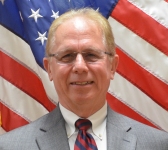
Lawrence A Presley
Department of Criminal Justice
Liberty University, USA -
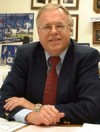
Thomas W Miller
Department of Psychiatry
University of Kentucky, USA -

Gjumrakch Aliev
Department of Medicine
Gally International Biomedical Research & Consulting LLC, USA -
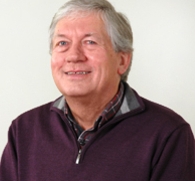
Christopher Bryant
Department of Urbanisation and Agricultural
Montreal university, USA -

Robert William Frare
Oral & Maxillofacial Pathology
New York University, USA -

Rudolph Modesto Navari
Gastroenterology and Hepatology
University of Alabama, UK -
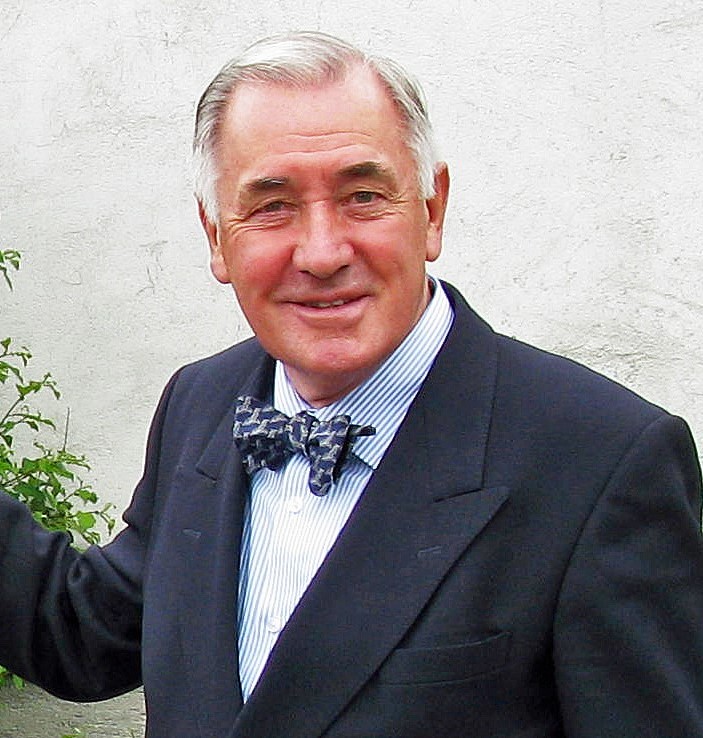
Andrew Hague
Department of Medicine
Universities of Bradford, UK -

George Gregory Buttigieg
Maltese College of Obstetrics and Gynaecology, Europe -
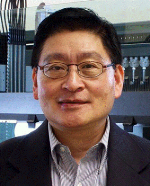
Chen-Hsiung Yeh
Oncology
Circulogene Theranostics, England -
.png)
Emilio Bucio-Carrillo
Radiation Chemistry
National University of Mexico, USA -
.jpg)
Casey J Grenier
Analytical Chemistry
Wentworth Institute of Technology, USA -
Hany Atalah
Minimally Invasive Surgery
Mercer University school of Medicine, USA -
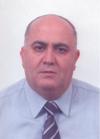
Abu-Hussein Muhamad
Pediatric Dentistry
University of Athens , Greece

The annual scholar awards from Lupine Publishers honor a selected number Read More...




